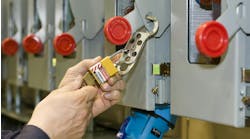Tingling, numbness, stiffness, and sharp pain in the dominant hand (and elbow) is common among frequent users of hand tools. But those problem are both preventable and, if you get them, treatable in the early stages without medication or surgery. If left untreated, however, surgery may eventually become the only realistic option. So, don’t ignore the problems or mask them with pain-killers.
Sometimes, the symptoms appear after a big project push. If you just got done working seven 12-hour shifts for two weeks straight while spending most of your time on torque wrenches, you have a pretty good idea why your fingers tingle and your elbow hurts. But a more typical situation is it just happens during your normal routine. And often, it’s not even at work that you first experience that sharp pain in your elbow.
Along with the pain comes a noticeable decrease in grip strength. What do you do? You try to grip harder. This makes things worse, and then you seem to hurt all the time. A common solution at this point is to reach for the Ibuprofen or some other anti-inflammatory drug. There are two problems with this solution:
- This and similar drugs are hard on your liver. Try turmeric, instead; it’s almost as potent and has no known side effects.
- Your body is trying to tell you to stop. Masking the pain with this or a similar drug can fool you into not taking that message seriously.
If you’re at this point, you need to discuss your condition with your supervisor and get a different assignment. If that isn’t practical, then you may just need reduced hours. Figure something out so that you are subjecting those tissues to significantly less stress immediately.
If you’re not yet at that point, you can avoid getting there with these actions:
- Have that same discussion with your supervisor.
- Identify power tools you can use in place of the hand tools. They don’t eliminate the stress and strain, but they decease it significantly.
- Avoid long stretches of repetitive motion. Break them up with other tasks. For example, suppose you have to bolt 60 connections, and then Bob will come behind you to test them with a low ohm meter. If you bolt 10 at a time and do your own testing, Bob can also do 10 at a time and do his own testing. While one is bolting, the other is testing. Now you put half the strain on your hands and elbows while also having that strain for only one-sixth long each time.
A big contributing factor is we almost always apply force in the forward direction. That is, we apply force by using our extensors to bring the fingers inward. Nearly all of the contraction is in one direction, and nearly all of the lengthening is in the other; over time this creates an imbalance. Bring the fingers and thumb of one hand together, put a rubber band around them, and open the hand. This helps to correct the imbalance.
What about those elbow tendons? Doing a few simple exercises with a flexibility bar a couple of times per day has an effect in the elbow similar to the rubber band exercise’s effect in the hand.
What about stretches? If done incorrectly, these will make things worse. It is best to consult a physical therapist or chiropractor to show you the exact stretches (and other therapeutic exercises) you need for your particular condition and how to do them.
If you’re an electrician or an engineer, you’ve likely been using hand tools since you were a little kid. That’s a long time, and tiny stresses and injuries accumulate over time. And then the pain hits. Don’t wait for things to get better on their own while you are doing pretty much what you’ve always done. They won’t. First reduce or eliminate the activities that are contributing to the problem, then address those problems with the simple, proven methods that lead to healing and restore your hands to be fully functioning and pain-free.




